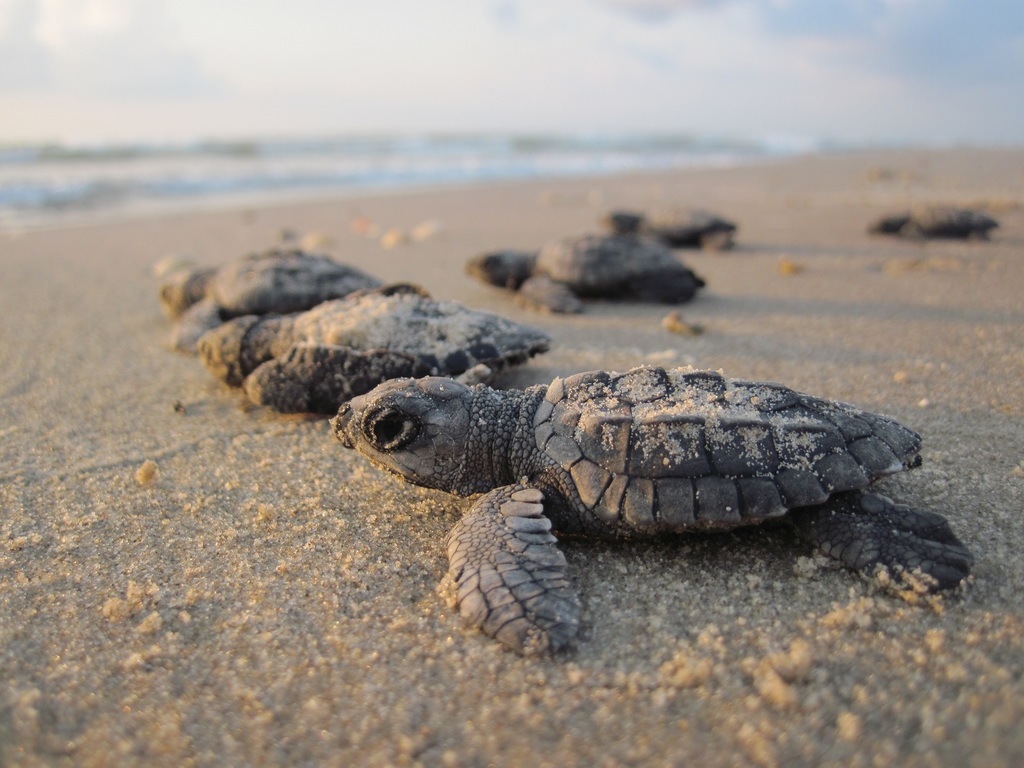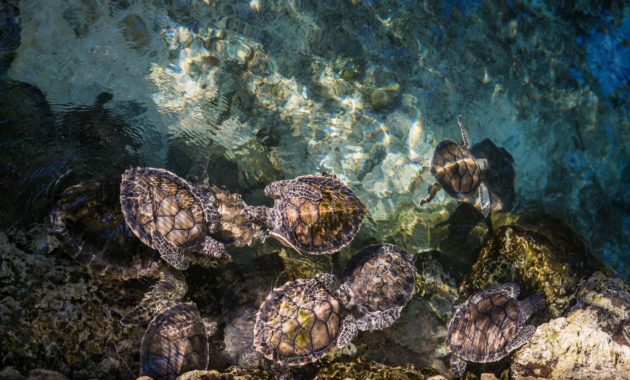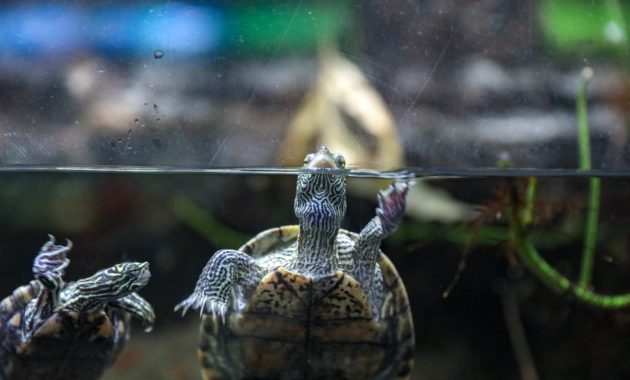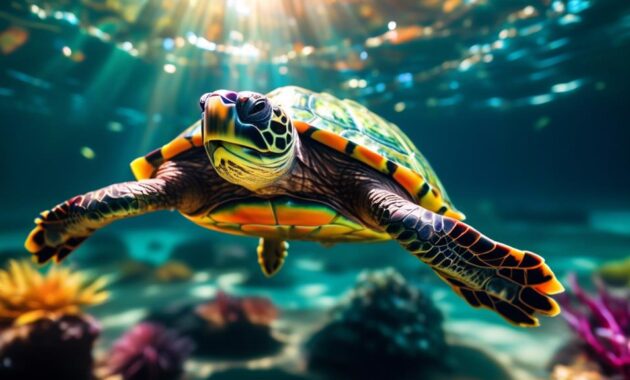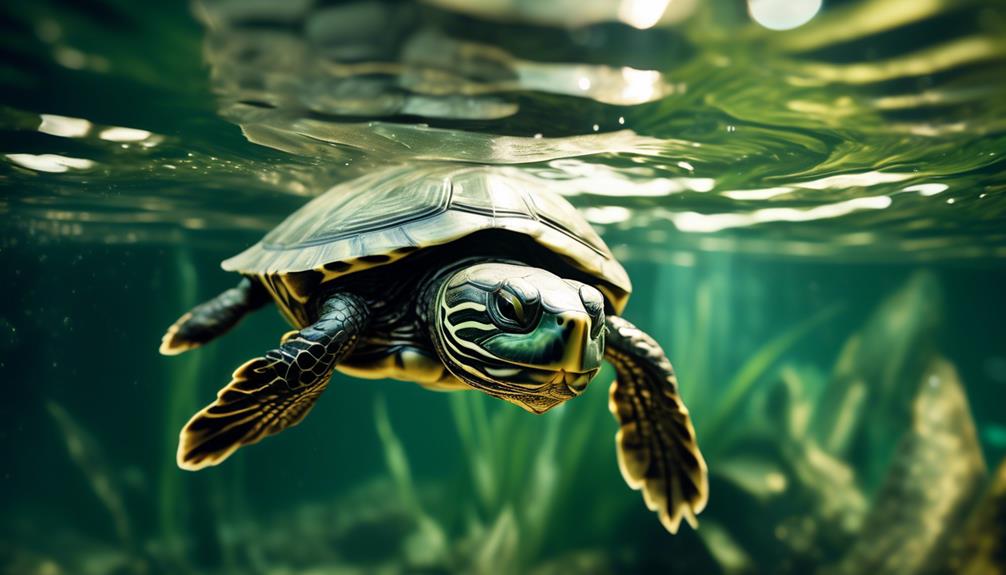
Have you ever wondered about the hidden wonders lurking beneath the surface of our rivers and lakes?
Picture yourself venturing into the depths, where a mysterious creature awaits, its presence shrouded in intrigue. The Northern Map Turtle, with its captivating carapace resembling intricate waterways, is a true marvel of nature.
But there is more to this enigmatic turtle than meets the eye. As we embark on this exploration, we will uncover the secrets of its behavior, habitat, and captivating description.
Prepare to be enthralled as we unravel the mysteries of the Northern Map Turtle, a creature that holds the key to a fascinating aquatic world.
Key Takeaways
- The Northern Map Turtle is a small, semi-aquatic turtle found in North America.
- It has distinct features such as thicker lines on its limbs and face, with bright yellow lines on its face and limbs.
- Females are larger and more dominant, while males have longer claws.
- They require a large outdoor enclosure or a large indoor aquarium tank with hiding places underwater and a basking area above water, along with specific temperature and lighting requirements.
Description and Behavior
The Northern Map Turtle is a small, semi-aquatic marvel with distinct features and fascinating behaviors. These turtles have a lifespan of 15-20 years and are characterized by thicker lines on their limbs and face. Females are larger and more dominant, while males have longer claws. Their carapace lines are typically orange or yellow, with darker colors in between. The lines on their face and limbs are often bright yellow.
Found in North America, specifically in the eastern half of the United States and southern Canada, these turtles prefer areas with moving water, such as large streams or rivers. They make their home in lakes and rivers, leaving the water to lay eggs and bask. You can often find them basking together as a group. Larger adults prefer deeper water with less vegetation.
Habitat and Distribution
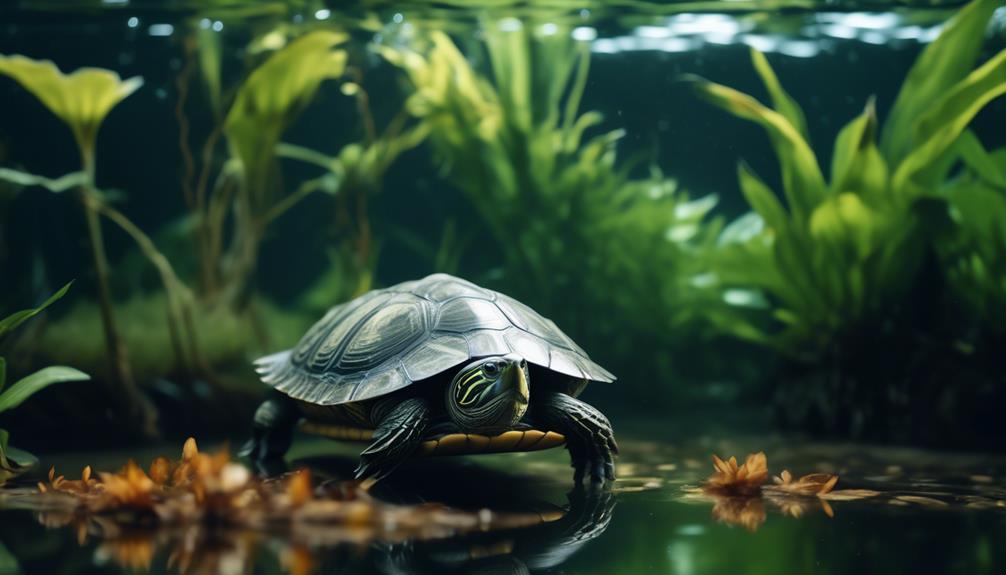
To understand the habitat and distribution of the Northern Map Turtle, let’s explore where these small, semi-aquatic marvels can be found in North America. They are primarily found in the eastern half of the United States and southern Canada. These turtles prefer areas with moving water, such as large streams or rivers, and make their home in lakes and rivers. They leave the water to lay eggs and bask, sometimes even basking together as a group. Larger adults tend to prefer deeper water with less vegetation. To give you a clearer picture, here’s a table outlining their habitat and distribution:
| Habitat | Distribution |
|---|---|
| Moving water areas | Eastern half of the United States and southern Canada |
| Lakes and rivers | |
| Basking areas | |
| Deeper water with less vegetation |
Care Requirements
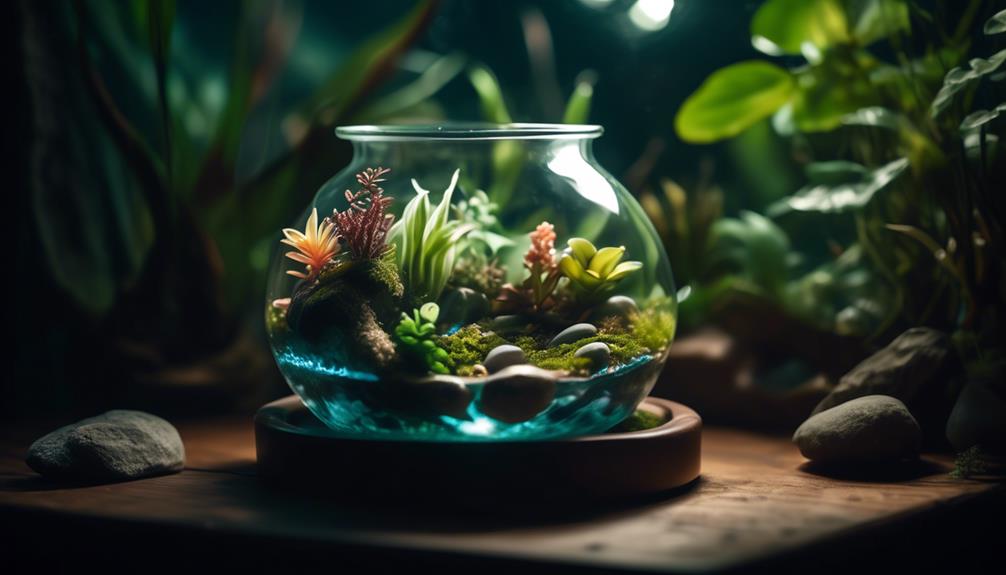
Ensuring proper care for Northern Map Turtles involves providing them with the necessary habitat and nutrition. To meet their needs, consider the following guidelines:
Habitat Requirements:
- Provide a large outdoor enclosure or a spacious indoor aquarium.
- Include hiding spots underwater and a basking area above water.
- Maintain a basking temperature of 84-94F and a water temperature of 72-80F.
- Set up a UVB lamp over indoor enclosures or expose outdoor enclosures to sunlight.
- Regularly check the pH level of the water and ensure cleanliness.
Nutrition:
- Offer an omnivorous diet, feeding underwater.
- Males enjoy smaller prey like aquatic insects, while females can have snails and clams.
- Include commercial turtle diet, dead mealworms, frozen shrimp, and dark leafy greens in their diet.
Remember to avoid handling or holding the turtle, as they don’t enjoy it. Also, provide enough space and food if housing multiple turtles in the same enclosure.
Native Habitat
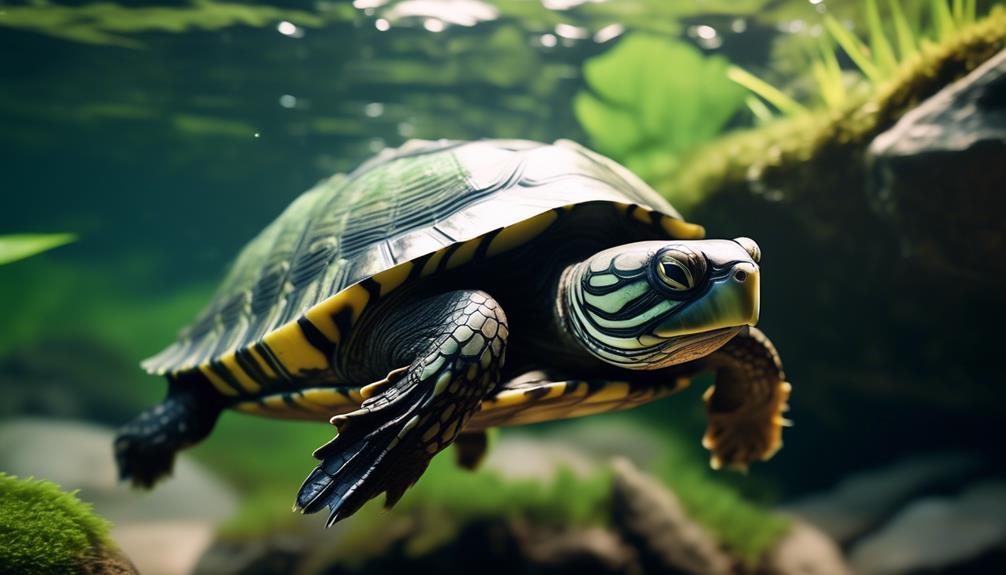
When considering the natural habitat of the Northern Map Turtle, it’s important to understand the specific environments in which they thrive.
These turtles are found in North America, specifically in the eastern half of the United States and southern Canada. They prefer areas with moving water, such as large streams or rivers, where they make their home in lakes and rivers. They can often be seen basking together as a group.
Larger adults tend to prefer deeper water with less vegetation. To replicate their native habitat in captivity, you’ll need to provide a large outdoor enclosure or a large indoor aquarium tank. It’s crucial to ensure they’ve places to hide underwater and a basking area above water.
The basking temperature should be between 84-94F, while the water temperature should be maintained between 72-80F. Additionally, it’s essential to set up a UVB lamp over the indoor enclosure or expose the outdoor enclosure to sunlight.
Regularly check the pH level of the water and maintain cleanliness to ensure a healthy habitat for these aquatic marvels.
Overall Description and Environment
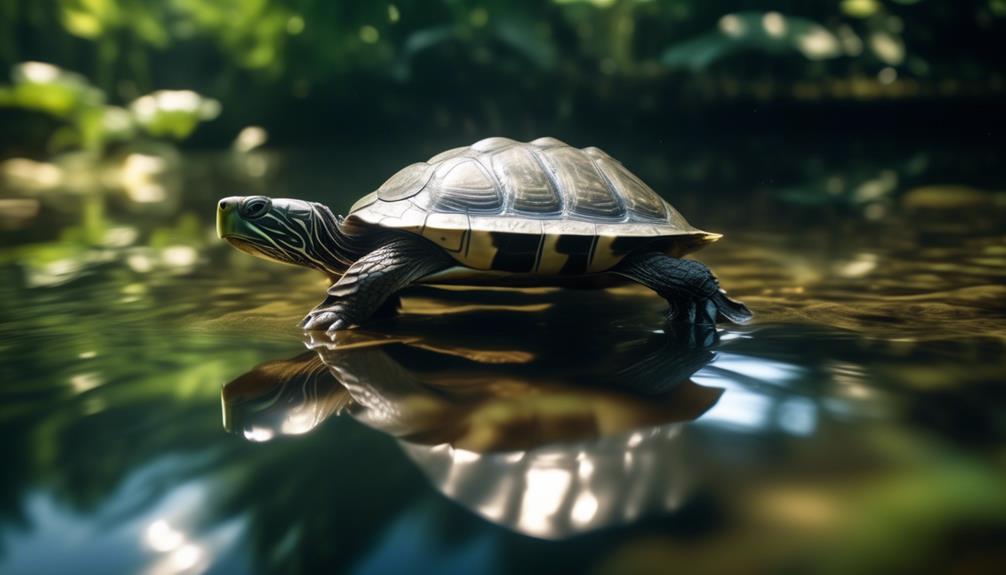
The Northern Map Turtle’s overall appearance and its natural environment make it a fascinating aquatic marvel. Its carapace has a design resembling a map or waterways, adding to its allure.
To thrive, these turtles require a large outdoor enclosure or a spacious indoor aquarium tank. They need places to hide underwater and a basking area above water, with a basking temperature ranging from 84-94°F and a water temperature of 72-80°F.
Setting up a UVB lamp over their indoor enclosure is crucial, while outdoor enclosures should be exposed to sunlight. Regularly checking the pH level of the water and maintaining cleanliness is essential for their well-being.
The Northern Map Turtles’ unique appearance, coupled with their specific care requirements, make them a truly remarkable species to observe and care for.
Frequently Asked Questions
How Can You Differentiate Between Male and Female Northern Map Turtles?
To differentiate between male and female northern map turtles, you can look for size differences and longer claws in males. Females are larger and more dominant. Additionally, the lines on their carapace and face may have brighter colors.
Do Northern Map Turtles Lay Eggs Every Year?
Yes, northern map turtles lay eggs every year. They make their home in lakes and rivers, leaving the water to lay eggs and bask. They prefer areas with moving water and larger adults prefer deeper water with less vegetation.
What Is the Average Size of a Fully Grown Northern Map Turtle?
The average size of a fully grown Northern Map Turtle is about 5-10 inches in length. They have a unique carapace design resembling a map or waterways, and require a large enclosure with hiding spots and a basking area.
Can Northern Map Turtles Live in Captivity for Their Entire Lifespan?
Yes, they can live in captivity for their entire lifespan. Provide a large enclosure with hiding spots and a basking area. Maintain proper temperatures and lighting. Regularly clean the water and provide a balanced diet.
Are Northern Map Turtles Social Animals and Do They Interact With Other Turtles in the Same Enclosure?
Yes, northern map turtles are social animals and they do interact with other turtles in the same enclosure. They can be found basking together as a group and it’s important to provide enough space and food for multiple turtles.
What are the similarities between Northern Map Turtles and Mud Turtles?
Northern Map Turtles and Mud Turtles share several similarities. They both have webbed feet and prominent carapaces. Both species are also known for their love of aquatic habitats. Despite their differences, these mysterious mud turtles secrets unveiled reveal the commonalities between the two fascinating creatures.
Conclusion
So, if you’re captivated by the world of aquatic creatures, the Northern Map Turtle is sure to amaze you. With its unique carapace and preference for areas with moving water, this enigmatic turtle is truly a marvel of nature.
Its lifespan of 15-20 years and natural habitat in the eastern half of the United States and southern Canada make it a fascinating species to study and care for.
Dive into the world of the Northern Map Turtle and uncover its secrets today.

